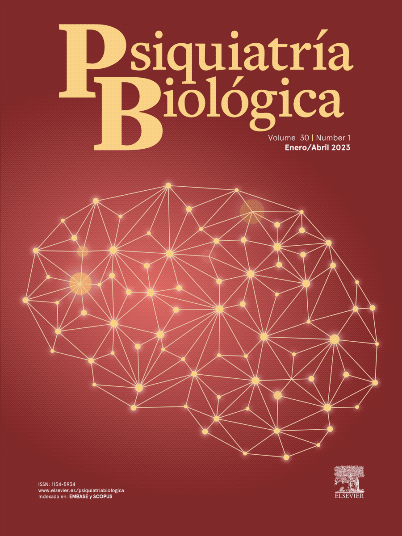La enfermedad de Fahr en un síndrome de etiología desconocida caracterizado por la presencia de calcificaciones idiopáticas bilaterales en ganglios basales y manifestaciones clínicas de tipo neuropsiquiátrico. Describimos el caso clínico de un varón de 70 años sin antecedentes de interés que ingresa en la unidad de agudos por un episodio depresivo con ideas delirantes congruentes e ideación suicida. Tres años antes había recibido el diagnostico de trastorno depresivo y de enfermedad de Fahr basándonos en hallazgos compatibles en la TC, manteniéndose asintomático hasta el ingreso. La falta de respuesta a antidepresivos, antipsicóticos y benzodiacepinas del episodio actual desembocó en un estado de estupor melancólico que precisó TEC. Tras la resolución de los síntomas de tipo afectivo se objetivó deterioro cognitivo característico de la enfermedad de Fahr.
Fahr disease is a syndrome of unknown etiology, consisting of bilateral idiopathic calcifications of basal ganglia and neuropsychiatric symptoms. We describe the case of a 70 year old man with no psychiatric background, admitted to the hospital due to the presence of depressive symptoms with economic and guilt delusions and suicidal idea. He suffered a depression 3 years ago that completely resolved with mirtazapine, and calcifications of basal ganglia were a casual finding in the CT. In the current hospital admission, the lack of efficacy of antidepressant, antipsychotic and anxiolytic treatment lead to a severe melancholy stupor that indicated electroconvulsive therapy, which controlled both the psychotic and affective symptoms, but a cognitive impairment state was observed once the psychiatric symptoms resolved.
Artículo
Comprando el artículo el PDF del mismo podrá ser descargado
Precio 19,34 €
Comprar ahora






